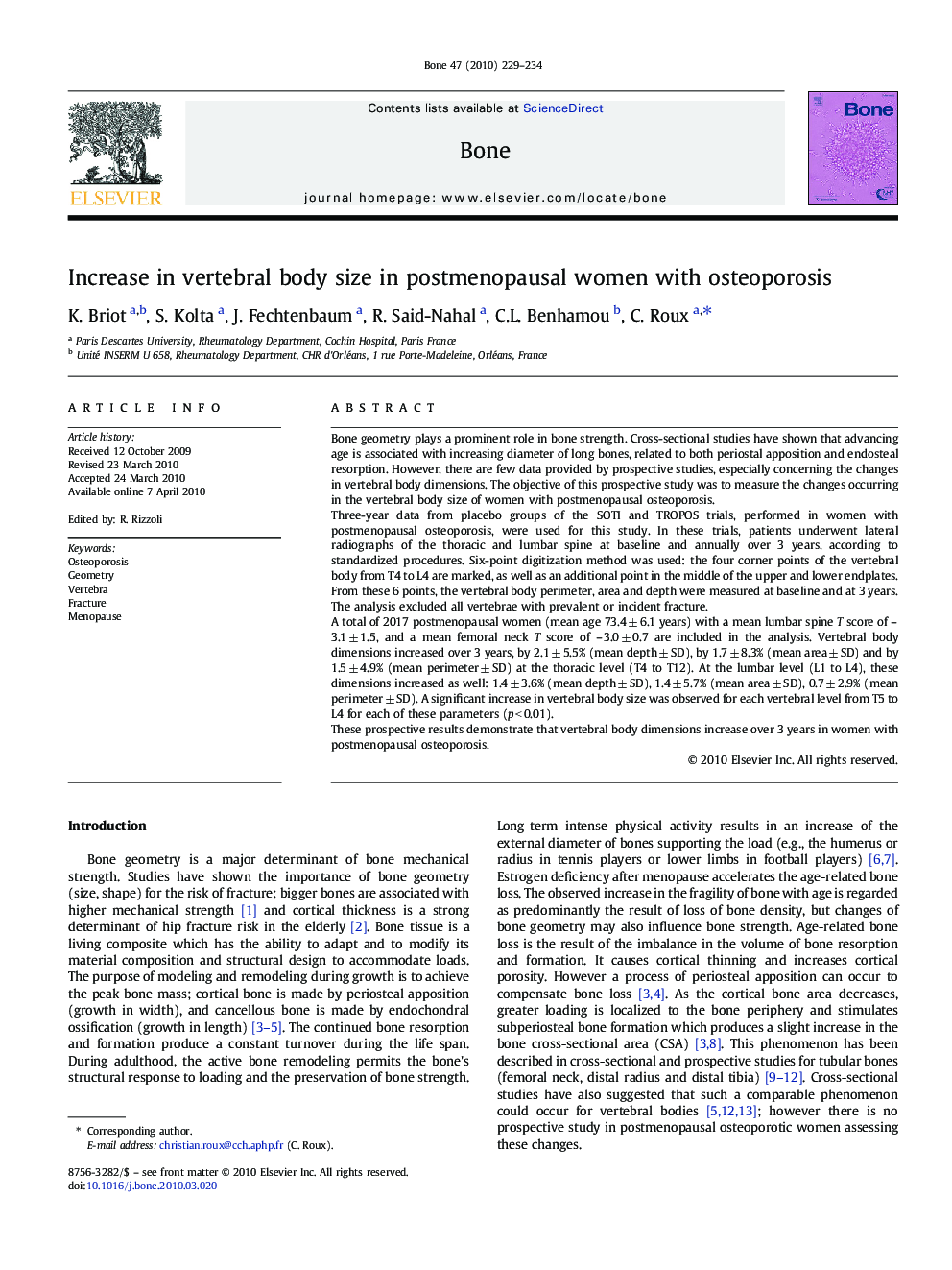| Article ID | Journal | Published Year | Pages | File Type |
|---|---|---|---|---|
| 2780650 | Bone | 2010 | 6 Pages |
Bone geometry plays a prominent role in bone strength. Cross-sectional studies have shown that advancing age is associated with increasing diameter of long bones, related to both periostal apposition and endosteal resorption. However, there are few data provided by prospective studies, especially concerning the changes in vertebral body dimensions. The objective of this prospective study was to measure the changes occurring in the vertebral body size of women with postmenopausal osteoporosis.Three-year data from placebo groups of the SOTI and TROPOS trials, performed in women with postmenopausal osteoporosis, were used for this study. In these trials, patients underwent lateral radiographs of the thoracic and lumbar spine at baseline and annually over 3 years, according to standardized procedures. Six-point digitization method was used: the four corner points of the vertebral body from T4 to L4 are marked, as well as an additional point in the middle of the upper and lower endplates. From these 6 points, the vertebral body perimeter, area and depth were measured at baseline and at 3 years. The analysis excluded all vertebrae with prevalent or incident fracture.A total of 2017 postmenopausal women (mean age 73.4 ± 6.1 years) with a mean lumbar spine T score of – 3.1 ± 1.5, and a mean femoral neck T score of – 3.0 ± 0.7 are included in the analysis. Vertebral body dimensions increased over 3 years, by 2.1 ± 5.5% (mean depth ± SD), by 1.7 ± 8.3% (mean area ± SD) and by 1.5 ± 4.9% (mean perimeter ± SD) at the thoracic level (T4 to T12). At the lumbar level (L1 to L4), these dimensions increased as well: 1.4 ± 3.6% (mean depth ± SD), 1.4 ± 5.7% (mean area ± SD), 0.7 ± 2.9% (mean perimeter ± SD). A significant increase in vertebral body size was observed for each vertebral level from T5 to L4 for each of these parameters (p < 0.01).These prospective results demonstrate that vertebral body dimensions increase over 3 years in women with postmenopausal osteoporosis.
